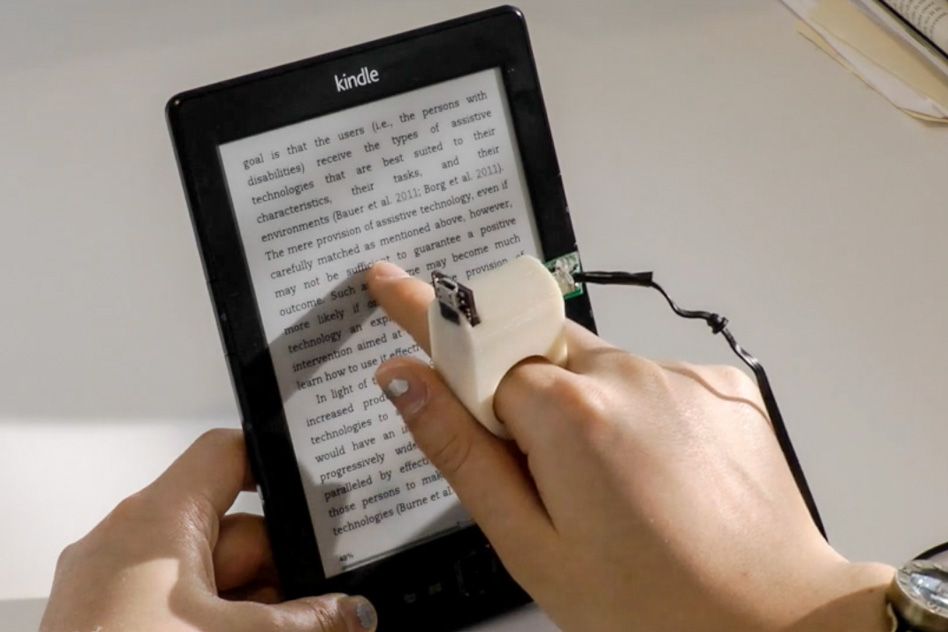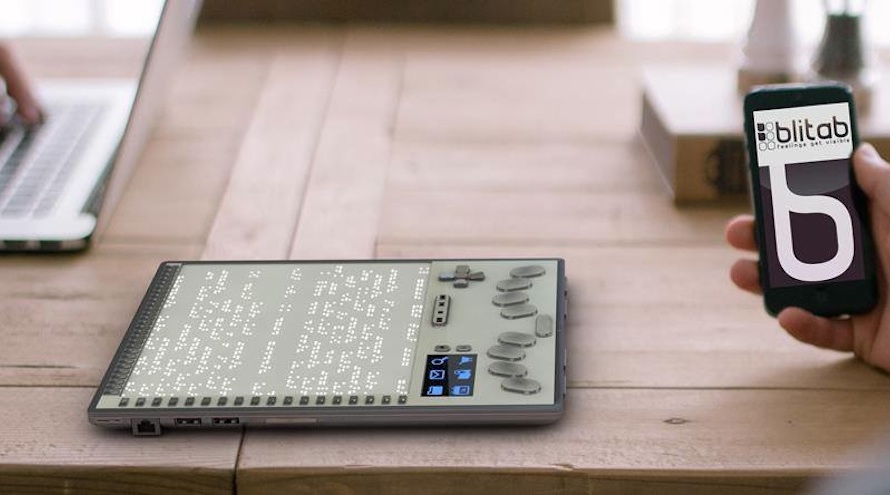AI-Powered Visual Aids: Redefining Support for the Blind
Wiki Article
Empowering Freedom With Assistive Modern Technology for the Blind
The combination of assistive modern technology into the lives of people with visual disabilities stands for a substantial advancement in promoting independence and self-sufficiency. From ingenious screen visitors to advanced wise walking sticks, these tools not only boost day-to-day navigation and interaction however also encourage customers to engage meaningfully in different elements of life. As we check out the myriad benefits and real-world applications of these modern technologies, it ends up being important to check out the underlying aspects that add to their performance and the possibility for future growths in this crucial area.Overview of Assistive Technology

The development of assistive technology is based in principles of inclusivity and empowerment. Developments in software program, equipment, and sensory improvements supply individuals with alternatives tailored to their particular needs. From screen visitors that convert text to speech, to responsive tools that convey info through touch, these devices transform the way individuals engage with their surroundings.
Along with functional applications, assistive innovation fosters better social incorporation and participation in numerous sectors, including education and employment (Voice-activated assistive devices). As r & d proceed to develop, the possibility for assistive innovation to better boost the lives of aesthetically impaired people continues to be promising, leading the way for a more fair society where everybody can flourish
Sorts Of Assistive Gadgets
A selection of assistive devices have emerged to support individuals with aesthetic impairments, each developed to meet particular requirements and improve daily functioning. These gadgets range from low-tech options to sophisticated developments, offering varied options for individuals.Low-tech gadgets consist of magnifiers and large-print materials that help in analysis and writing. Braille devices, such as Braille stylus pens and slates, enable responsive reading and communication. Orientation and movement help, like white canes, assist users navigate their atmosphere securely.
On the higher end of the spectrum, digital magnifying systems and screen viewers provide significant assistance. Digital magnifiers allow users to enlarge text and photos on screens, while display visitors transform electronic content into synthesized speech, assisting in access to info on computer systems and smartphones.
Smart device applications additionally play an essential role, supplying functions like message acknowledgment and navigating support. Wearable technology, such as wise glasses geared up with increased fact, is arising as an appealing device to boost situational recognition.
Benefits of Assistive Innovation
The combination of assistive innovation dramatically boosts the high quality of life for individuals with visual problems. These technologies empower users by promoting self-reliance, enabling them to navigate their environments more efficiently and execute everyday jobs with better simplicity. For example, display visitors and zoom software application allow individuals to access digital details, promoting expert and educational opportunities that might have formerly been out of reach.Furthermore, assistive gadgets such as wise canes and general practitioners applications offer real-time navigation assistance, improving mobility and safety. This boosted freedom not only improves self-esteem yet likewise encourages social involvement, enabling customers to take part even more totally in their neighborhoods.
Assistive technology likewise facilitates interaction, assisting users attach with others through voice recognition and text-to-speech applications. This capability is important for keeping connections and accessing crucial info.
In addition, the personalization options offered with several assistive technologies guarantee that individuals can customize tools to their specific requirements, even more enhancing use and performance. In general, the advantages of assistive innovation for people with aesthetic impairments are profound, advertising a more comprehensive culture where everybody can seek their objectives and aspirations.
Instance Studies and Success Stories
Highlighting the transformative influence of assistive innovation, numerous study show how individuals with visual problems have efficiently integrated these devices right into their day-to-days live. One compelling instance includes an university student that used screen analysis software program to browse scholastic products and online sources successfully. This innovation not only promoted her education however also boosted her confidence in joining conversations and team jobs.Another instance study includes a specialist that employs a mobile phone application designed for navigating and object acknowledgment. By utilizing this application, he has actually regained autonomy in both his personal and workplace, enabling him to commute separately and involve with colleagues more efficiently.
In addition, a retiree shared her experience with braille e-readers, which allowed her to access a large array of literature and remain connected with her community with OCR devices for the blind publication clubs.
These success stories underscore the important role of assistive modern technology in cultivating freedom, boosting lifestyle, and promoting social combination for individuals with visual impairments (Smart glasses for the visually impaired). By embracing these cutting-edge devices, users can conquer difficulties and take possibilities that add to their personal and specialist satisfaction

Future Trends in Assistive Modern Technology
Development in assistive modern technology is poised to redefine the landscape of assistance for people with visual problems. Emerging patterns stress the integration of expert system (AI) and artificial intelligence, which boost the functionality of gadgets that help with navigation and info accessibility. For instance, AI-driven applications are currently qualified of interpreting visual information in real-time, enabling individuals to involve with their atmosphere more independently.Additionally, the development of wearable technology is progressing swiftly. Smart glasses outfitted with increased fact (AR) can give audio descriptions of surroundings, transforming how individuals communicate with public rooms. These devices not just advertise freedom yet additionally foster social addition.
Furthermore, the Web of Things (IoT) is making homes smarter, permitting for smooth connectivity between everyday devices and assistive tools. This connectivity empowers users by enabling automated responses and voice-activated controls customized to private needs.
Verdict
In final thought, assistive technology plays a crucial function in equipping individuals with aesthetic impairments by boosting their self-reliance and involvement with their surroundings. The varied series of applications and gadgets available not just promotes navigation and interaction but likewise promotes social combination and chances for professional and personal growth. As innovations continue in this field, the capacity for boosting the high quality of life for those with aesthetic problems will increase, fostering higher freedom and empowerment.
Report this wiki page